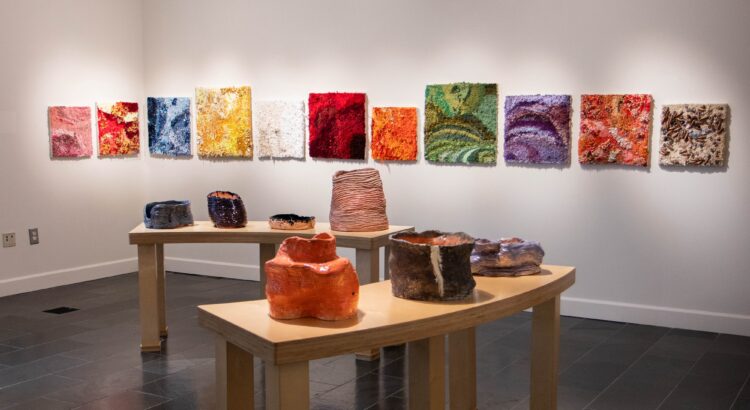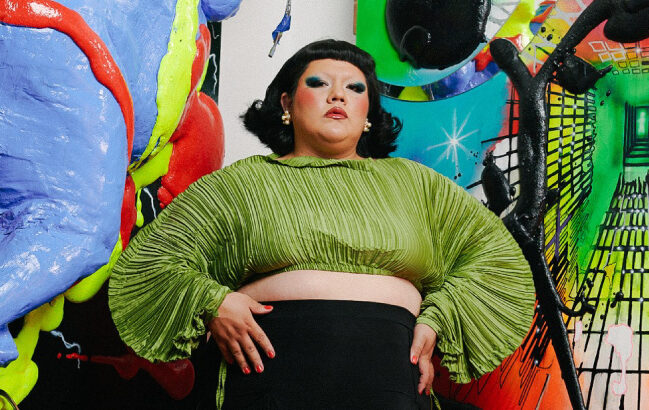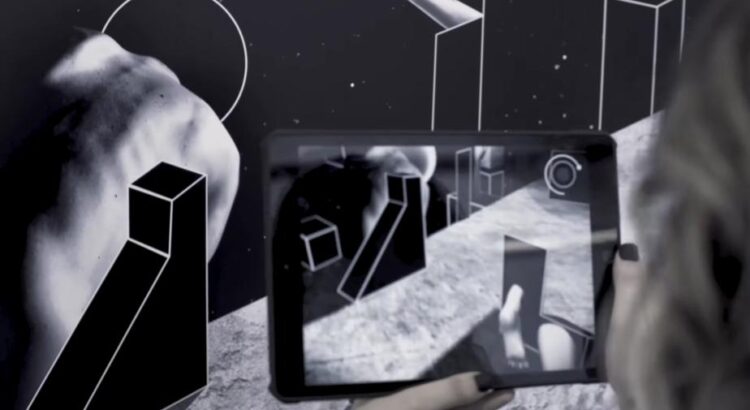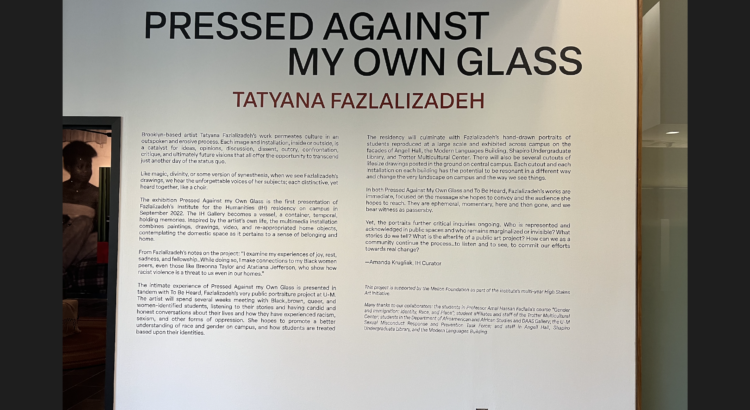In most art exhibitions, there’s one rule that should never be broken: don’t touch the art. But visitors to Ericka Lopez’s “touch” at the Institute for the Humanities are not just allowed, but encouraged, to break this taboo.
Ericka Lopez is a blind artist who works primarily through touch, and uses her memories of color from before she completely lost her vision to inform her color choices. Her exhibition consists of a mix of textile, ceramic and assemblage works, all of which viewers are “invited to gently touch.” Across the multitude of media, there are many textures to explore.
The punch-rug textile squares, in a rainbow of marbled colors, are shaggy and soft—but sometimes punctuated by beads and buttons, or a particularly scratchy type of yarn. The coil-built ceramic vessels are warped and bent into organic forms, appearing so flexible that I was almost surprised by how solid they felt under my fingers. And the assemblage works, sewn together out of everything from keys to spools of thread to fuzzy balls of yarn, were a surprising mix of textures. Sometimes, running my hand across a collection of beads would create delightful moments of sound as well, contributing to the truly multi-sensory experience.

Closing my eyes and exploring the works with only my hands was a lesson in just how nuanced my sense of touch could be. I learned from the textiles that there were many more different kinds of “soft” than I knew how to describe, and from the ceramics that a glossy glaze feels completely different from a matte one.
In her exhibition statement, curator Amanda Krugliak writes that “As visitors to the gallery become active participants, there is the opportunity for deeper human connection beyond surfaces.” It is one thing to be merely a viewer of an artwork, and another to touch it, to rub your fingers through loops of yarn or dangling beads. When my touch shifted an arrangement of keys on one of the assemblage works, I realized that it would be ever-so-slightly different for the next person to enter the gallery. The opportunity to participate in an exhibition in this way, and to be connected to the artwork in the same way that the artist was as she created it, is a rare and precious one.
The exhibition contains multiple features to make Lopez’s artwork accessible to blind and low vision visitors, including braille labels on the walls beside the pieces and QR codes leading to visual descriptions of the artwork. (There are no labels printed in plain text—sighted viewers will have to pick up a paper exhibition catalog just outside the gallery in order to read information about the pieces.) All exhibition materials are also available in both Spanish and English.
While the colors and textures may be visually stunning, pictures don’t do this exhibition justice. Ericka Lopez’s diverse and captivating body of work is best seen—and felt—in person.
“touch” is on view at the Institute for the Humanities Gallery until December 13th. Detailed information about accessibility can be found here.

























